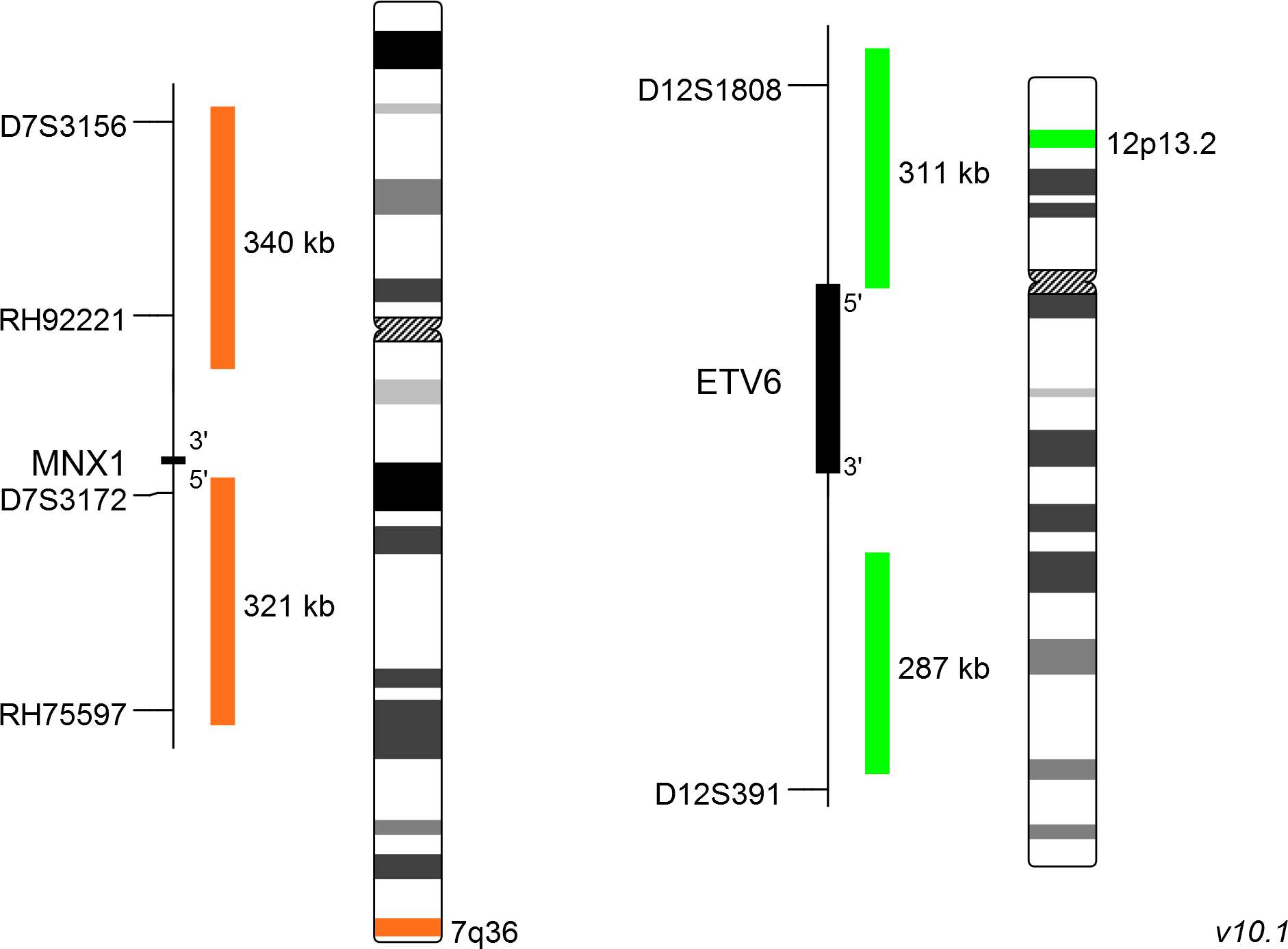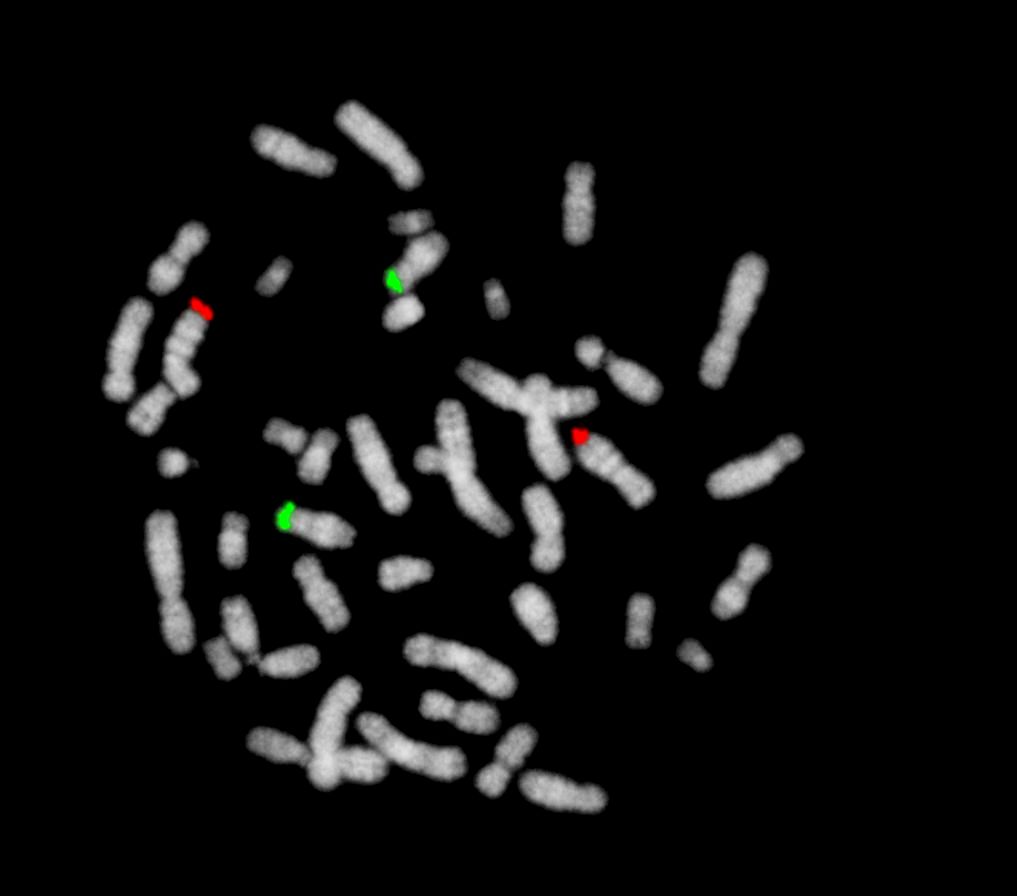
XL t(7;12) MNX1/ETV6
Translocation/Dual Fusion Probe
- Order Number
- D-5101-100-OG
- Package Size
- 100 µl (10 Tests)
- Regulatory Status
- IVDD
IVDR Certification
MetaSystems Probes has already certified a wide range of FISH probes, according to IVDR.
This product remains IVDD-certified until further notice.
Discover all IVDR-certified products
XL t(7;12) MNX1/ETV6 consists of an orange-labeled probe hybridizing to the MNX1 gene region at 7q36 and a green-labeled probe hybridizing to the ETV6 gene region at 12p13.2.
Probe maps for selected products have been updated. These updates ensure a consistent presentation of all gaps larger than 10 kb including adjustments to markers, genes, and related elements. This update does not affect the device characteristics or product composition. Please refer to the list to find out which products now include updated probe maps.
Probe map details are based on UCSC Genome Browser GRCh37/hg19, with map components not to scale.
Several recurrent balanced translocations and inversions, and their variants, are recognized in the WHO category acute myeloid leukemia (AML) with recurrent genetic abnormalities. Furthermore, several cytogenetic abnormalities are considered sufficient to establish the WHO diagnosis of AML with myelodysplasia-related features if 20% or more blood or marrow blasts are present.
The t(7;12)(q36;p13) translocation is a recurrent chromosome abnormality which involves the ETV6 gene on chromosome 12 and has been identified in 20–30% of infant patients with AML. The detection of t(7;12) rearrangements relies on the use of fluorescence in situ hybridization (FISH) because this translocation is hardly visible by chromosome banding methods. The clinical outcome of t(7;12) patients is believed to be poor, therefore an early and accurate diagnosis is important in the clinical management and treatment.
Clinical Applications
- Acute Myelogenous Leukemia (AML)

Normal Cell:
Two green (2G) and two orange signals (2O).

Aberrant Cell (typical results):
One green (1G), one orange (1O), and two green-orange fusion (2GO) (adjacent green and orange) signals.
- Ballabio et al (2009) Leukemia 23:1179-1182
- Naiel et al (2013) Cancers 5:281-295
- Owokaet al (2015) Hematol Leuk 3:1-4
Certificate of Analysis (CoA)
or go to CoA Database




